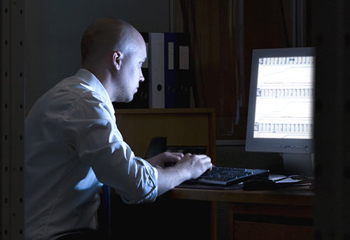Bangkok, Apr 4: People with type 2 diabetes have poorer control over their blood glucose levels when they work the night shift compared with those who work in the daytime or are unemployed, a new study has found.
 The study shows that poor long-term glycemic, or blood sugar, control, was independent of what workers ate or any sleep problems they had.
The study shows that poor long-term glycemic, or blood sugar, control, was independent of what workers ate or any sleep problems they had.
The findings expand on previous research showing that night shift work is associated with an increased risk for the development of diabetes.
"Previously, there were little data whether people who already have type 2 diabetes and work the night shift have trouble controlling their blood sugars," said Sirimon Reutrakul, associate professor at Mahidol University in Thailand.
"Our study data raise awareness of the difficulty in diabetes control among night shift workers," said Reutrakul.
Reutrakul and her colleagues studied 260 individuals with type 2 diabetes in Thailand: 62 night shift workers, 94 daytime workers and 104 unemployed individuals.
They determined the study participants' glycemic control by reviewing their medical records for recent measurements of hemoglobin A1C.
The A1C test shows the average blood sugar level over the previous three months. Most people with diabetes should strive for an A1C level below 7 per cent, according to the Hormone Health Network.
Night shift workers reportedly had an average A1C of 8.2 per cent, significantly higher than the 7.6 per cent A1C for daytime workers and 7.5 per cent A1C for participants who did not work.
On questionnaires, night shift workers also reported shorter sleep duration, higher daily intake of calories and higher body mass index, or BMI (an estimate of body fat), than did the other two groups.
Even after the researchers adjusted their statistical analyses for factors that could affect glucose metabolism, including sleep duration, dietary intake and BMI, the significant association between shift work and glycemic control remained, Reutrakul said.
"Diabetic individuals who work at night should pay special attention to managing their disease through healthy eating, regular exercise and optimal use of medications prescribed by their physician," Reutrakul added.





Comments
Add new comment